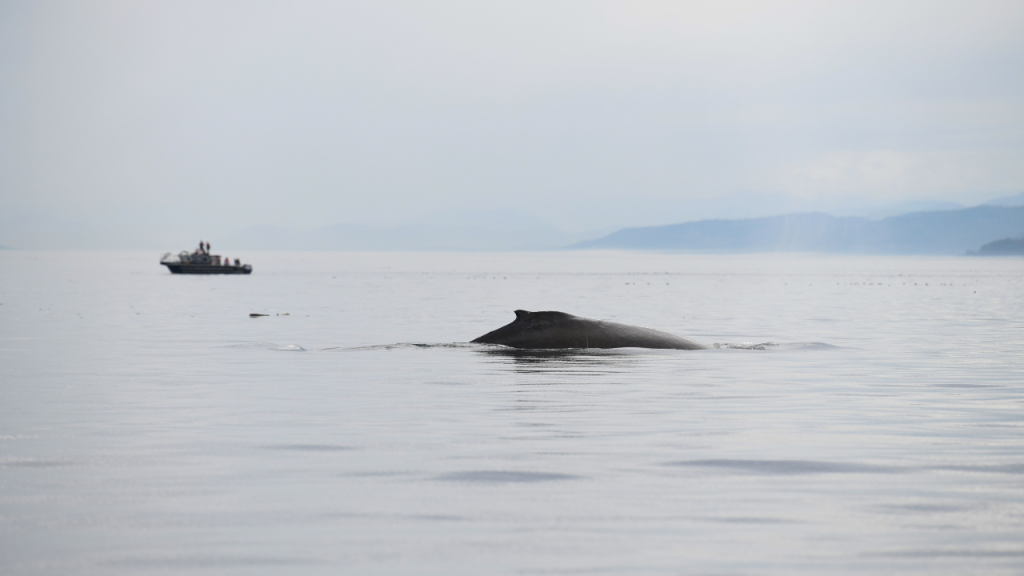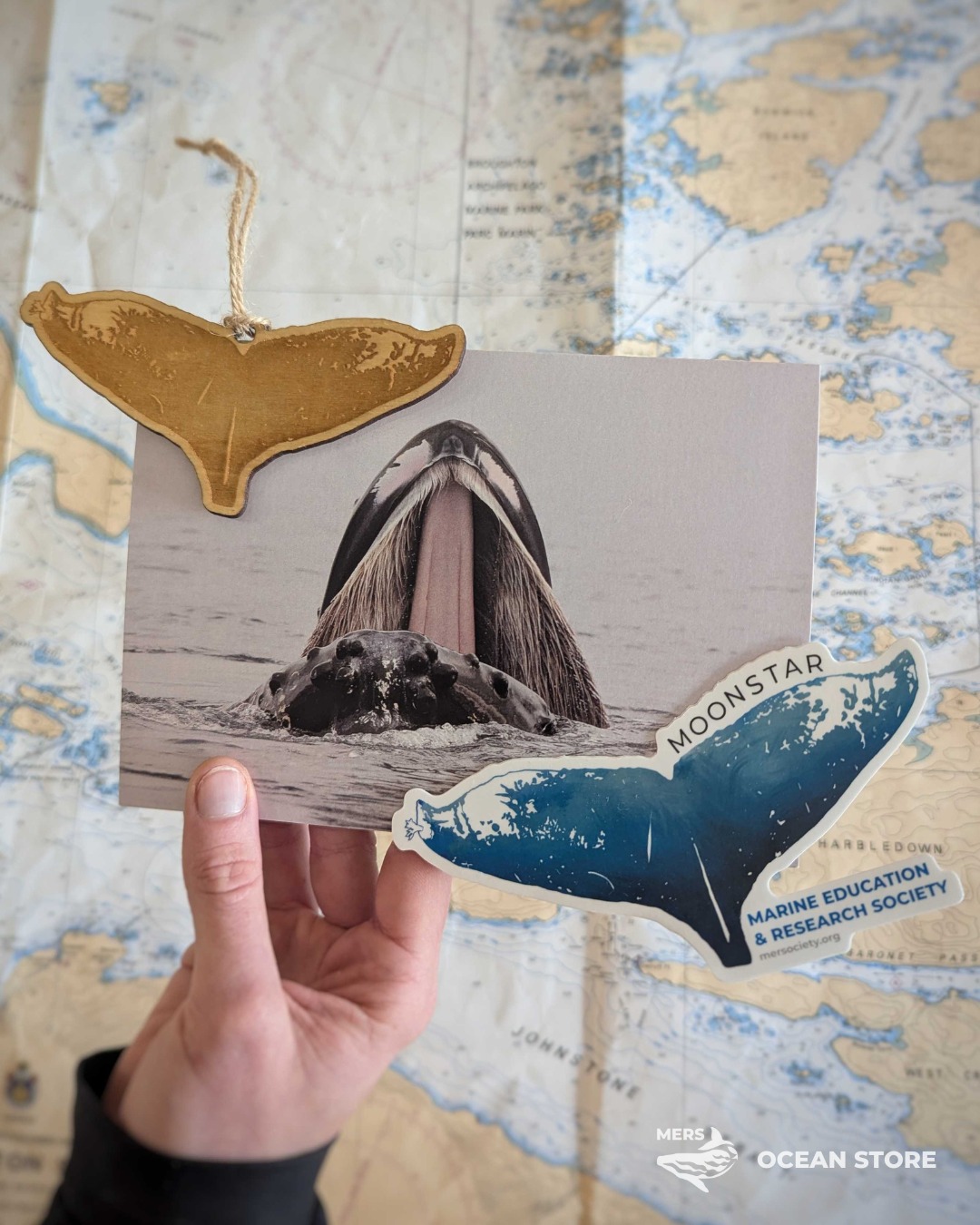How do we best reach boaters to encourage safer vessel operation around marine mammals?
This was the question that the MERS team pondered in the summer of 2023 when we embarked on a new project to understand what boaters know, where they may struggle, and how we can better our education efforts regarding whale-safe boating.

Connecting with boaters has been a key activity of MERS’ since our inception. In 2014, we launched our on-going “See a Blow? Go Slow” campaign to educate boaters about the return of large whales like Humpbacks to inshore waters, provide tips on how to detect them and avoid collisions with these animals, share the marine mammal regulations, and encourage best practices like using the Whale Warning Flag and reporting distressed marine mammals. This campaign has included over 425 signs posted at marinas and boat launches, public lectures, “dock talk” outreach with boaters, social media and many other promotional activities.
After nearly 9 years, it was also time to see if this work had made an impact.
To answer our questions, we had to go straight to the source. Working with Elayne McIvor at Catalyst Consulting, we designed a survey specifically for recreational boaters in British Columbia. Initially, we hoped for a sample size for approximately 400 boaters to give us insights. However, by collaborating with Ocean Wise and Cetus Research and Conservation Society to help us administer and promote the survey up and down the coast, our expectations were blown out of the water. Nearly 4,000 boaters responded!
So what did we learn?

The good news: overall, the survey findings show that the majority of responding recreational boaters are generally familiar with the boating laws and best practices around marine mammals in BC coastal waters, with some variability in comprehension for each area assessed. The majority could identify the Whale Warning Flag, understand the Marine Mammal Regulations, purposes of the DFO Incident Reporting Line, Humpback behaviours, how to reduce disturbances around marine mammals, and why it is important to not remove fishing gear/rope from entangled whales.
We were also relieved to see that the “See a Blow? Go Slow!” campaign had high familiarity with two-thirds of the respondents indicating that they had seen or heard about the campaign before (66%). The campaign was also successful in increasing the majority of viewers’ knowledge about boater safety and laws/best practices around marine mammals (87%), either ‘definitely’ (52%) or ‘somewhat’ (35%).

The survey also revealed where boaters could use more support on this topic. Boaters showed difficulty in determining the legal avoidance distances around marine mammals in various areas of the coast and in different situations. On average, 53% of responding boaters incorrectly identified the right avoidance distance in three different scenarios. In a related question, when asked to rank their key barriers to following the laws and best practices, the most common answer was “Difficulty remembering the laws for different species, vessel types and/or areas” (35%).
It also showed that only a smaller percentage (21%) participate in whale-focused citizen science and reporting.
Since the survey wrapped up in the Spring of 2024, we’ve been analyzing the results and sharings our lessons learned.
Using what we have learned, we are designing educational activities to target some of the less understood points highlighted through the survey. In the future, we will also break down the responses into various demographic categories to see if targeted activities for certain audiences may be helpful.
We are also sharing our results to help shape future policy. We have shared with regulators and enforcement that the survey shows boaters find the laws around marine mammals in BC are confusing, as well as difficult to remember and apply in real-world scenarios given the need to contextually assess situations. MERS is advocating for the rules to be simplified and consolidated to distances that support reduced disturbance for marine mammals but also support adherence by boaters to improve compliance and safety.
You can read the full Survey Summary Report below.


